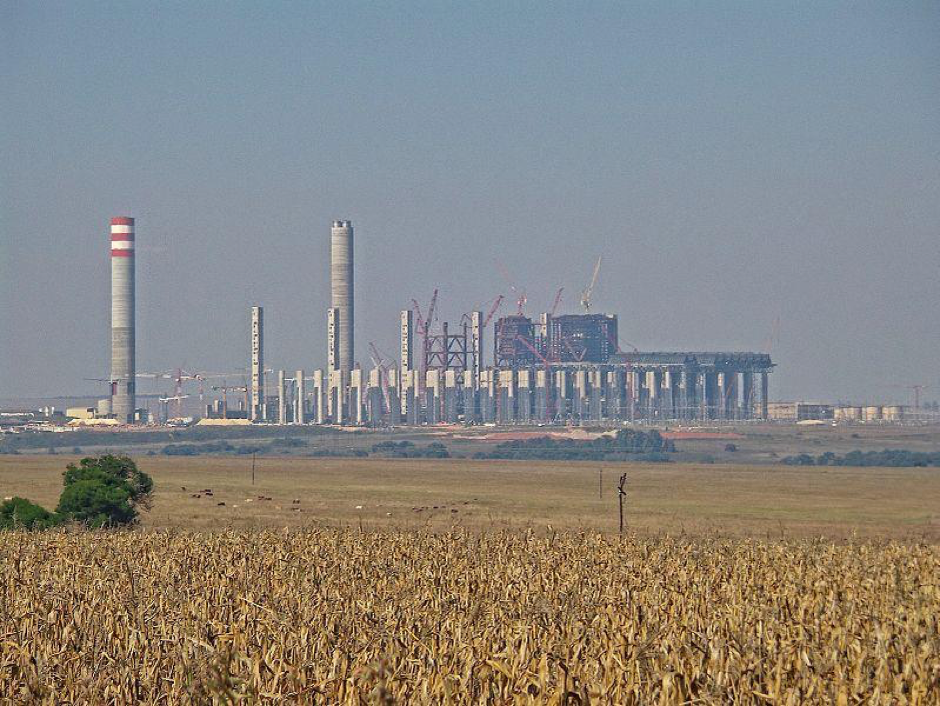
Kusile Power Station (image from Wikicommons)
From power stations, mega-roads and bridges, to a whole new futuristic city for Johannesburg, South Africa still leads the continent by overall number of construction projects. Here we take a look at some of the biggest, as well as the challenges and highlights they’ve faced along the way.
Kusile Power Station – Witbank, Mpumalanga
The Kusile Coal-Fired Power Plant in South Africa is the second largest project currently under construction in the greater Southern Africa region with a price tag of US$7.9 billion. The first of the six planned 800-megawatt units came into operation in March of 2017, and once all units are operational, Kusile should produce an output of 4,800 megawatts. Sadly, the project has suffered its share of delays and scandal along the way, but there have been some innovations too.
In order to deal with the coal waste or fly ash which is produced as a byproduct of its electricity production, Eskom brought in PRS South Africa to help assist with the safe storage of this potentially hazardous pollutant at Kusile. Because it requires storage for between 50 to 60 years, a very durable and long-lasting solution was needed for containment and monitoring. By combining a 7-layer composite liner system designed by Eskom with a layer of Neoloy geocells provided by PRS, the two companies came up with a better alternative to the traditional approach of high-maintenance and expensive reinforced concrete.
Because Neoloy, a high-performance novel polymeric alloy, resists creep and has high stiffness and tensile strength, the geocell layer is capable of sustaining high loads over time without deformation – vital in maintaining the protective layer even with continuous heavy traffic over the access road.
Jasper Solar Power Project, Northern Cape
In stark contrast to the delays experienced by Kusile and Medupi power stations, Africa’s largest renewable energy project, Jasper Solar, although admittedly a much smaller undertaking, managed to come into operation two months ahead of schedule in October of 2014. The project was made possible in part by funding provided through Google as part of their renewable energy investment plan.
Jasper generates approximately 180,000 MW-hours annually, enough to power 80,000 homes – and although dwarfed by the outputs of coal-fired power stations, it served to demonstrate that the rapidly declining cost of photovoltaic solar power made it a feasible option for larger-scale projects. The array comprises over 325,000 solar panels. A percentage of the project revenues are also set aside for socio-economic development to benefit local communities.
Zendai Modderfontein New City, Gauteng
Spanning more than 1,600 hectares between Sandton and OR Tambo International Airport, this Chinese-financed R84bn city is set to be a 15-year project. Work began on the first 300 residential units and roads in 2015, and when complete, it is hoped that the city will become the “Manhattan of Africa”. The contractor, Shanghai Zendai, plans nine functional zones for the city – a central business district, conference center, entertainment center, retirement industry, residential areas, education and trading center, sports center, and a logistic and light industrial park. Development of the city will however be market-driven, and it is hoped to create much-needed jobs during its construction and after completion.
Msikaba gorge bridge, Eastern Cape
Construction is set to start in February of 2019 on what will become Africa’s second longest main span bridge in the Eastern Cape near Lusikisiki in the Eastern Cape. Costing an estimated R1.65 billion, the bridge will be 580 meters long, and the third highest in Africa at 195 m above ground level. The bridge forms part of the N2 Wild Coast project by the South African National Roads Agency (SANRAL) and is expected to be completed in 2021. It is estimated that 2 500 tons of cables and 2 700 tons of structural steel will be used in its construction.
The North-South Africa corridor
Led by the COMESA-EAC-SADC Tripartite Task Force and with funding from various development partners, governments and the World Bank, the multi-billion dollar North-South Africa Corridor will link eight countries. Running from South Africa to Zambia and the Democratic Republic of the Congo (DRC), and from Botswana to Malawi, the project is designed to facilitate and ease trade across the entire region.
The project includes a network of over 8,500 kilometers of road, about 600 kilometers of rail, as well as power generation and port development projects. CEO of the NEPAD Business Foundation, Lynette Chen, emphasizes its importance: “Africa’s growth, development and success hinges on Africans connecting with each other and the North-South Rail Corridor is an excellent example of Africa’s integration and what can be achieved through cooperation.”



